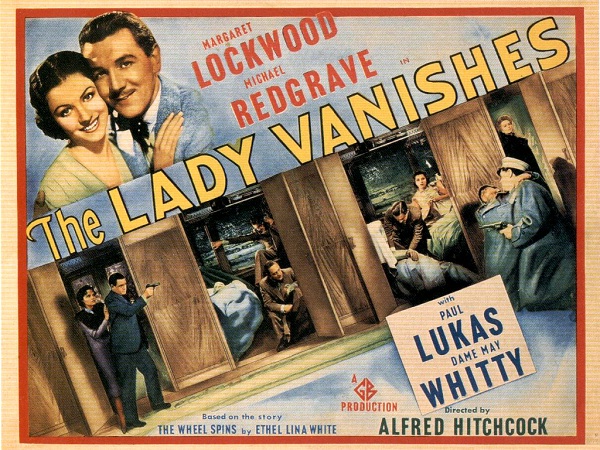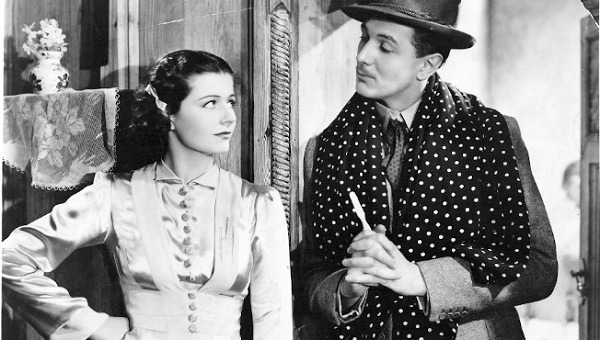 THE LADY VANISHES, Hitchcock’s next to last British film, starts with a train stranded in Bandrika, a fictional European country. After enduring the indignities of a crowded night at the town’s only inn, the passengers continue their journey on the next day’s train, including the soon-to-be-married Iris (Margaret Lockwood), Gilbert (Michael Redgrave), who is studying the region’s folk songs, and Miss Froy (Dame Mae Whitty), a governess returning to England after several years abroad. Just before they leave, Iris suffers a blow to the head from a flower pot intended for Miss Froy, and her final glimpse of the station as the train pulls away is refracted and blurry.
THE LADY VANISHES, Hitchcock’s next to last British film, starts with a train stranded in Bandrika, a fictional European country. After enduring the indignities of a crowded night at the town’s only inn, the passengers continue their journey on the next day’s train, including the soon-to-be-married Iris (Margaret Lockwood), Gilbert (Michael Redgrave), who is studying the region’s folk songs, and Miss Froy (Dame Mae Whitty), a governess returning to England after several years abroad. Just before they leave, Iris suffers a blow to the head from a flower pot intended for Miss Froy, and her final glimpse of the station as the train pulls away is refracted and blurry.
Once aboard the train, Iris and Miss Froy take tea in the dining car. Upon returning to the compartment, Iris falls asleep. When she wakes up, Miss Froy is no longer in the compartment, and no one will admit to having seen the governess on the train. Iris attempts to prove she is not suffering from a hallucination brought on by head trauma and determines to untangle the mystery of Miss Froy’s disappearance. She enlists the aid of Gilbert, who humors her initially, but comes to believe her story. Together they ransack the train for traces of the missing Miss.
THE LADY VANISHES features a fine cast of minor characters who appear by turns humorous, dramatic, sordid, and sinister, each with their personal motivations for dismissing the existence of Miss Froy. Naunton Wayne and Basil Radford are a wry delight as a pair of self-centered Englishmen whose sole reason for undermining Iris’s story is that their fear she will stop the train and prevent them from attending a cricket match. Another pleasure is Catherine Lacey, in her film debut, as a mysterious nun in high-heels.
Suspenseful and absorbing as when first released, THE LADY VANISHES has lost nothing to time. It’s also notable as a portrait of Europe on the verge of war made when Europe was in fact on the verge of war. Plots and spies, international conspiracy and collusion were all on the mental radar of the film’s intended audience, lending sense of fact to the fiction, and giving a little serious ground to a story that otherwise is purely thrilling fun.

